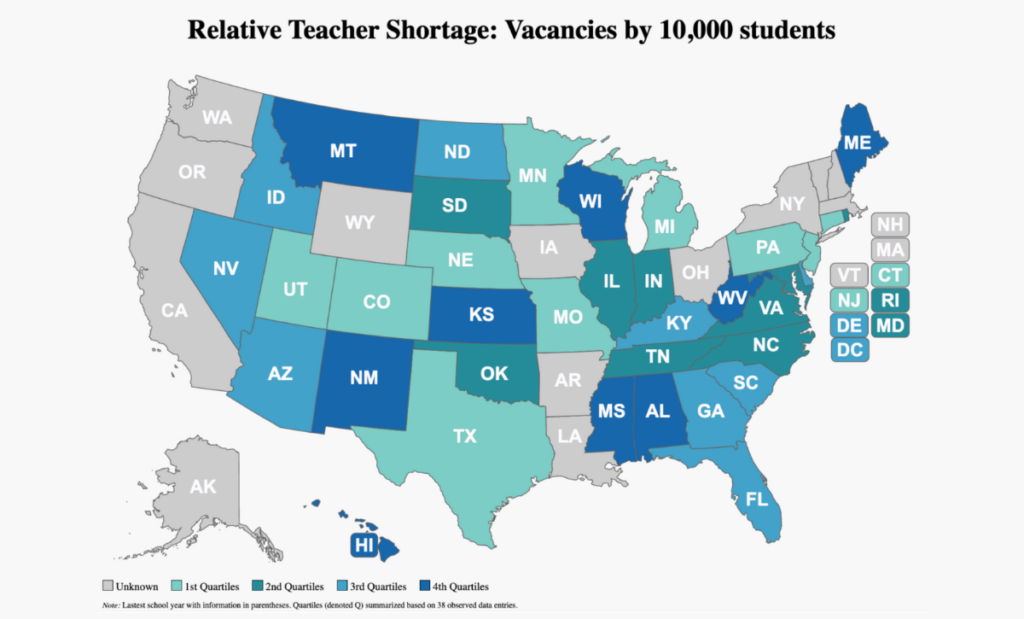More on the teacher shortage debate
Teacher shortages are hardly new, but recently it has been described as a national problem. Is it? Given that there is no real national consensus on how to define a teacher shortage, and that national data on teacher vacancies can be hard to come by, it’s a tricky narrative to navigate.
Scholaroo, an organization that helps students find scholarships, decided to illustrate the deficit by comparing the number of teachers in each state to the state population.
North Dakota is faring the best, with 13.13 teachers per 1,000 population. Minnesota comes in at #34, just below Wisconsin, with 9.41 teachers per 1,000 population. Florida’s teacher-population ratio with 6.54 teachers per 1,000 population is the lowest in the country.
This doesn’t neatly answer the teacher shortage question for a number of reasons. As The Economist aptly asked: “A school may have enough teachers for each pupil, but is it experiencing a teacher shortage if it cannot find one for a new music course?”
If an administrator is teaching one class, is that a shortage or is the administrator simply doing her job? Is a district in trouble if it is unable to staff 3% of its positions? How about 1%?
According to data from the North Dakota University System, there were 167 “unfilled” full-time equivalent positions during the 2021-2022 academic year, which is slightly up from the 2020 school year (149.18) but lower than pre-COVID numbers (193.55 for 2019-2020), reported the Grand Forks Herald.
Since this raw vacancy count doesn’t account for the number of students in the state, a recent analysis by three education researchers from Kansas State University and the University of Illinois Urbana-Champaign put North Dakota’s teacher vacancy relative to student population, or around 12.74 vacancies per 10,000 students. Interestingly, this puts North Dakota on the higher end of vacancies based on student population. The data is from the 2018-2019 school year though, so look for an updated analysis from me on how COVID-19 impacted this number.
The analysis by Tuan Nguyen, Chanh Lam and Paul Bruno also examined the number of underqualified hires in the state, given that teacher shortages can also be reported by the number of teachers hired without being fully certified. For North Dakota, this came out to 4.39 underqualified hires per 10,000 students for the 2017-2018 school year, which is on the lower end compared to other states. Again, these numbers will have to be updated.
“The teacher supply pipeline seems to be stagnating or decreasing over time,” Nguyen told The 74. “Over the last 10 years or so there has been a substantial drop in the number of teacher candidates.” For North Dakota, there were 613 individuals who received a bachelor’s degree in education, compared to a 10-year high of 657 in 2013.
